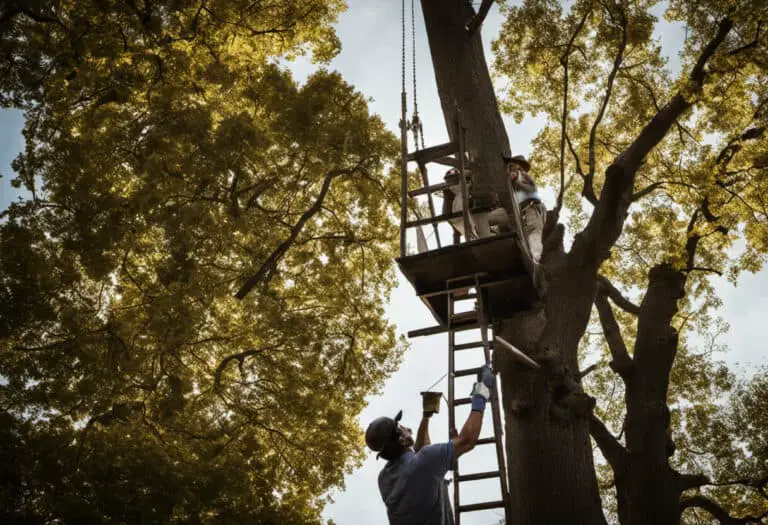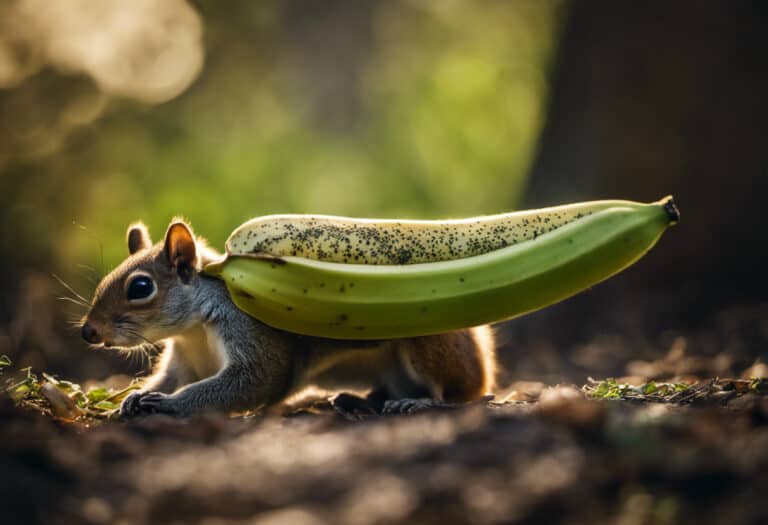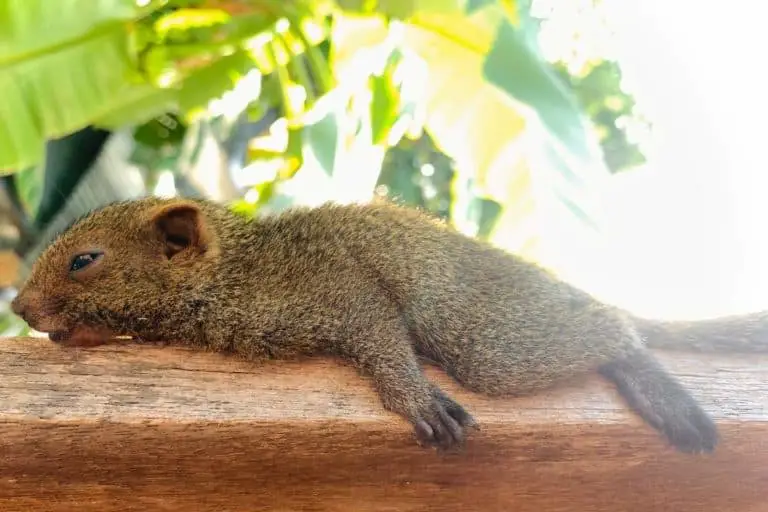How to Capture a Squirrel
Did you know that squirrels can cause up to $200 million in damage to homes each year?
If you’re dealing with a squirrel problem, don’t worry. This article will guide you through the process of capturing a squirrel safely and effectively.
Learn how to:
- Choose the right tools
- Understand squirrel behavior
- Create an effective trap
- Use baiting techniques
- Set up the capture area
- Handle and release the squirrel
With these tips, you’ll be able to reclaim your space from these mischievous critters.
Key Takeaways
- Research local laws and regulations regarding squirrel capture.
- Choose the appropriate trap size and bait to effectively capture squirrels.
- Set and monitor the trap carefully to avoid distressing or injuring the squirrel.
- Handle and release the squirrel calmly and safely, ensuring a suitable release area.
Choosing the Right Tools
When capturing a squirrel, it’s important to choose the right tools. Safety precautions and ethical considerations should be taken into account during the capture process. To ensure the safety of both the squirrel and yourself, it is recommended to use humane traps specifically designed for small animals. These traps are designed to capture the squirrel without causing harm.
It’s important to avoid using harmful or lethal traps that could potentially injure or kill the squirrel. Additionally, make sure to handle the captured squirrel with care, wearing gloves to prevent any possible bites or scratches.
Before attempting to capture a squirrel, it’s crucial to research local regulations and laws regarding the capture and release of wildlife. Following these guidelines will ensure a safe and ethical capture process.
Understanding Squirrel Behavior
Understanding squirrel behavior can be helpful in finding effective ways to capture them. Squirrels are highly intelligent creatures that use a combination of vocalizations, body language, and scent marking to communicate with each other. By studying their communication patterns, you can gain insight into their social structure and behavior. Squirrels also have specific nesting habits that can aid in their capture. They build nests, known as dreys, high up in trees using twigs, leaves, and other materials. These nests provide them with protection from predators and harsh weather conditions. By locating and observing squirrel nests, you can identify their preferred areas and increase your chances of capturing them. Understanding squirrel communication and nesting habits is essential in devising effective strategies for capturing these nimble creatures.
| Communication | Body Language | Scent Marking |
|---|---|---|
| Chattering | Tail Flicking | Urine marking |
| Barking | Ear Position | Scent glands |
| Whistling | Paw Gestures | Cheek rubbing |
Remember to approach the capture of squirrels with caution and respect for their natural behavior.
Creating an Effective Trap
Creating an effective trap can increase your chances of successfully catching these agile critters. When it comes to squirrel trapping, it’s important to be aware of the regulations in your area. Always check with your local wildlife agency to ensure you are following the proper guidelines.
One common mistake in squirrel trapping is using a trap that is too small. Squirrels are nimble and can easily escape if the trap is not large enough. Additionally, using the wrong bait can also hinder your success. Squirrels are attracted to nuts, seeds, and fruits, so these make excellent bait choices.
Lastly, make sure to place your trap in a location where squirrels are known to frequent, such as near trees or bird feeders. By following these tips and avoiding common mistakes, you’ll have a better chance of successfully capturing squirrels.
Baiting Techniques
To increase your chances of success, it’s important to use enticing bait when setting up a trap for squirrels. Understanding squirrel feeding habits is crucial for selecting the right bait.
Squirrels are opportunistic eaters and have a diverse diet consisting of nuts, seeds, fruits, and vegetables. One effective DIY squirrel bait recipe is a mixture of peanut butter and birdseed. The strong aroma and combination of textures make it irresistible to squirrels.
Another option is to use sunflower seeds, as squirrels are known to have a preference for them. Additionally, corn, apples, and walnuts can be used as bait.
It’s important to note that the bait should be securely attached to the trap to prevent squirrels from easily stealing it. By using these baiting techniques, you’ll increase your chances of capturing squirrels successfully.
Setting Up the Capture Area
When setting up your capture area, make sure you choose a location that is easily accessible for you to monitor. Consider the proximity to your home or a window that allows you to observe the area without disturbing it.
Additionally, ensure that the location is safe and secure, both for the squirrels and for any potential legal considerations. It’s important to check local laws and regulations before attempting to capture squirrels. Some areas may require permits or have specific guidelines in place. By following the legal requirements, you can avoid any legal issues that may arise.
Once you have identified a suitable location, focus on attracting squirrels to the area. Implement baiting techniques and use materials such as nuts, seeds, or fruits that are appealing to these creatures.
Remember to regularly check and maintain the capture area to maximize your chances of success.
Handling and Releasing the Squirrel
Now that you have successfully captured the squirrel, it is important to handle it properly and release it safely. The rehabilitation process for squirrels involves minimizing stress and providing appropriate care. Remember, it is essential to consider legal considerations when handling wildlife.
When handling the squirrel, make sure to wear gloves to protect yourself from potential bites or scratches. Gently hold the squirrel by its scruff, ensuring that its head is supported. Avoid excessive handling or rough movements, as this can cause additional stress to the animal.
Before releasing the squirrel, check local regulations regarding wildlife release. Some areas may require permits or specific release locations. Find a suitable habitat, preferably near trees, for the squirrel’s release. Open the carrier or trap gently and allow the squirrel to exit at its own pace.
Frequently Asked Questions
What Is the Best Way to Prevent Squirrels From Entering My Property in the First Place?
To prevent squirrel infestation and squirrel-proof your property, start by sealing all potential entry points like gaps in walls and openings in the roof. Trim tree branches near your home and use metal mesh to cover vents.
Are There Any Legal Restrictions or Permits Required for Capturing Squirrels?
Before attempting to capture a squirrel, it is important to understand the legal requirements and permits needed. Research local wildlife regulations and consult with your local authorities to ensure you are in compliance.
How Long Does It Usually Take to Successfully Capture a Squirrel Using the Mentioned Techniques?
When capturing a squirrel, it is important to know how to lure them into a trap. However, if the process takes longer than expected, remain patient and make sure the trap is set up correctly.
Can I Relocate Captured Squirrels to a Different Area, or Is It Better to Release Them Close By?
When considering the relocation of captured squirrels, ethical concerns arise. Is it better to release them nearby, allowing them to stay in their familiar territory, or is it more humane to relocate them to a different area?
What Are Some Common Mistakes to Avoid When Attempting to Capture a Squirrel?
When attempting to capture a squirrel, avoid common mistakes such as making sudden movements or loud noises that could scare it away. Instead, use effective techniques like setting up baited traps and being patient.
Conclusion
In conclusion, capturing a squirrel requires careful planning and the right tools. By understanding squirrel behavior and creating an effective trap, you can increase your chances of success.
Baiting techniques and setting up the capture area strategically can also help lure the squirrel into the trap. Remember to handle the squirrel with care and release it back into its natural habitat.
Just like a squirrel’s agility and resourcefulness, your determination and preparation will be the key to successfully capturing these elusive creatures. So, gear up and embark on your squirrel-catching adventure!





